- Home
- Applied Ability Awards
The GBK CookbookThe British Food TrustOther |
The Food of Walesby Helen Gaffney
Many English culinary traditions developed from the top, that is from the amply stocked larders and groaning sideboards of aristocratic country mansions, but the true tastes of Wales, the 'old foods' that people still speak of and relish with such fondness, come from the harsh Celtic land which yielded not a lot, but enough to satisfy. The bleak uplands of Wales could support few cereal crops other than oats, and thus, in common with other Celtic countries, they form part of the staple diet, used as a cereal in soups or porridge, or shaped into thin cakes and cooked on the planc or bakestone. While today we regard sweet mountain lamb as the Welsh national speciality, that full-flavoured meat was almost certainly reserved for holidays or special occasions only; it was the pig that formed the mainstay of the diet. In rural areas certainly, and even in semi-urban parts of the mining valleys, the twlc or pig-sty at the bottom of every garden, was an enduring feature, the annual pig slaughter, performed by an itinerant butcher, an exciting ritual.
Another simple favourite that warms the heart of many a Welshman also indicates the importance of bacon and root vegetables in the daily diet of the past: tatws rhost, no more than fat rashers of bacon placed over slices of potato, sprinkled with spring onions and a little water and cooked over the open fire. A simple filling food of the land, certainly, but today still enjoyed equally by businessmen and professionals in Cardiff or Swansea, as well as by farm-hands in Meirionnydd and coal miners in the Valleys. Until the development of the coal mines in the south and slate quarries in the north, Wales remained essentially an agricultural country, made up of numerous small-holdings and tenant farms. Along the coast, of course, fishing was and to a certain extent remains an important industry. Great shoals of herring and mackerel were caught off the west coast and these plentiful fish were simply fried in bacon fat, roasted on a toasting fork, salted or preserved. Along the Gower, the lovely peninsula that extends between Swansea and industrial Llanelli, oysters were once caught in great quantities at Port Einon. Indeed, throughout Britain, oysters used to be prolific, though here, as elsewhere, they have since become scarce, and thus an expensive luxury. Even in the past they tended to be an item sold for cash rather than eaten locally. However, one shellfish that continues to provide a source of inexpensive protein to a coastal people is the cockle. Across the Gower, in Penclawdd and other tiny villages, the cocklemen and cocklewomen continue to gather this humble shellfish as they have for centuries.
Wales is an ancient land, indeed, still in many ways very much a separate country, as visitors to the Welsh-speaking west and north soon realise. The lovely sing-song of the language, heard in pubs and shops and markets, is wonderfully, incomprehensibly strange to those not familiar with it. The fisherman who knocks at the back door of the pub with a string of trout, or maybe a salmon or sewin (the Welsh name for sea trout) speaks Welsh because it is his native language, the language he speaks at home, and which his children learn at school. It is a language as ageless as the pitch-covered coracle from which he plies his trade. The design of this tiny, almost circular boat has altered little since Neolithic days. It is hardly more than a wicker frame covered no longer with hide but with calico that has been sealed with boiling pitch. Coracles are remarkably maneuverable, and on rivers such as the Teifi, Tywi, Taf and Cleddau, remarkably efficient too, a factor which has led to their unfortunate decline in use, due to over-fishing. Specialities such as salmon, sewin or other seasonal delicacies such as wild mushrooms might appear on the table not as a main meal but at supper, just as a small taste to be savoured. Supper, as opposed to the main midday meal, is generally a light snack at eight or nine in the evening. However, mealtimes in Wales tend to revolve around the main householder's occupation. In the north, there was a meal known as the swper chwarel or quarry supper, at five in the afternoon, when the men returned to the light once more from the subterranean depths of slate caves in Blaenau Ffestiniog and elsewhere. Coal miners worked shifts which affected when meals were taken. Likewise farmers' and farm labourers' mealtimes vary according to the time of year and the jobs at hand.
Today, certainly, many more people work regular hours, but one meal which remains loved by all, even if no longer indulged in daily, is the traditional Welsh tea. In the past, as elsewhere, baking was done just once a week, and in addition to breads such as wholemeal, rye, barley or maslin (made with a mixture of flours), such favourites as bara brith (the famous 'speckled bread' of Wales) would be put in the wall oven alongside the week's loaves. In many parts of Wales, however, more often than not Welsh breads and cakes were baked over or in front of an open fire in improvised pot and Dutch ovens. Teisen lap is one such traditional Welsh cake, no more than a moist, shallow fruit cake, while others, delicious in their surprisingly extensive use of spices include teisen carawe (caraway seed cake), teisen sinamon (cinnamon cake) and teisen mêl (honey cake). Such cakes are still made today throughout Wales, though the recipes of the past have been updated for cooking in modern ovens.
The Welsh are extremely fond of crempog (pancakes) stacked into layers and oozing with good salty Welsh butter. Bara pyglyd (pikelets) are another favourite, the spongy holes unequalled in their ability to absorb butter. Welsh butter is generally very highly salted, perhaps to some an acquired taste, though much missed by Welshmen when far from home.
The rich in Wales did not eat the foods of the country, but, living in their comfortable plas (such mansions are to be found throughout the country, topping the finest possible positions overlooking valleys and villages), tended to ape the English, to deny the Welshness of Wales. This social divide was apparent in many other aspects of life: the landed gentry were (mainly) Church of England, Conservative in politics and, of course, non-Welsh speaking. The gwern, on the other hand (the word translates roughly as 'peasantry', though its meaning is much richer), were non-conformist, devout chapel goers, liberal or Whig in politics and were concerned with safeguarding the culture and language of Wales. The foods of Wales are just as much a part of this nation's culture and history, and likewise should be safeguarded, not as a historical relic from times past, but simply because they can be so delicious. Recipes from Wales |
||

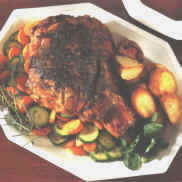
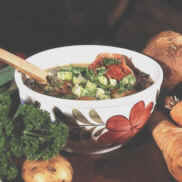
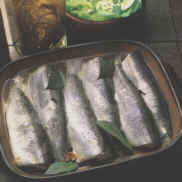
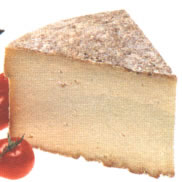
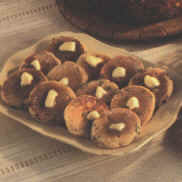

 Top of page
Top of page
 Previous page
Previous page